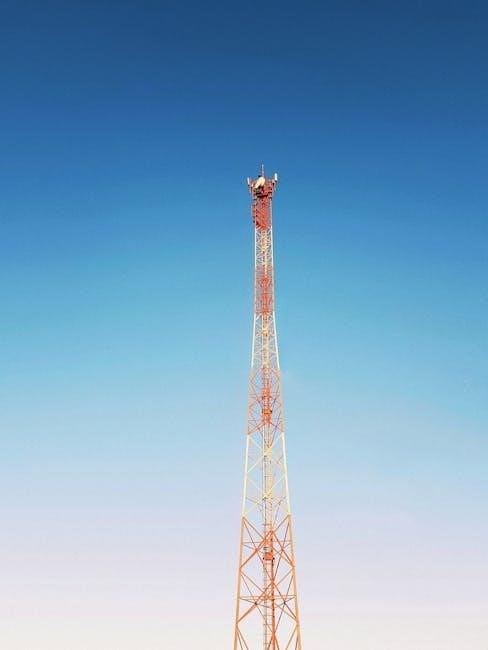manual transmission remote start
Remote start technology for manual transmissions is less common due to mechanical differences and safety concerns. However, advancements now offer solutions like reservation mode and neutral safety switches, enhancing convenience and comfort while addressing traditional challenges.
1.1 Overview of Remote Start Technology
Remote start technology allows drivers to start their vehicles without physical contact, typically using a key fob or smartphone app. It sends a signal to the car’s computer, initiating engine startup. This convenience is especially useful in extreme weather conditions. For manual transmissions, however, remote starting is less common due to challenges like gear position sensing. Many manufacturers avoid offering remote start for manuals, but aftermarket solutions now exist. These systems often include safety features like reservation mode, ensuring the vehicle is in neutral before starting. Proper installation is critical to prevent accidents and ensure functionality. It enhances convenience while addressing unique challenges.
1.2 Importance of Remote Start for Manual Transmissions
Remote start technology offers significant convenience for manual transmission vehicles, despite being less common. It allows drivers to start the engine from a distance, preheating or cooling the interior. This is especially beneficial in extreme weather conditions. For manuals, reservation mode is often used, ensuring the vehicle is in neutral before starting. While many manufacturers avoid offering remote start for manuals due to safety concerns, aftermarket solutions now provide a way to enjoy this feature. This technology not only enhances comfort but also adds value to the driving experience, making it a desirable upgrade for manual transmission enthusiasts.
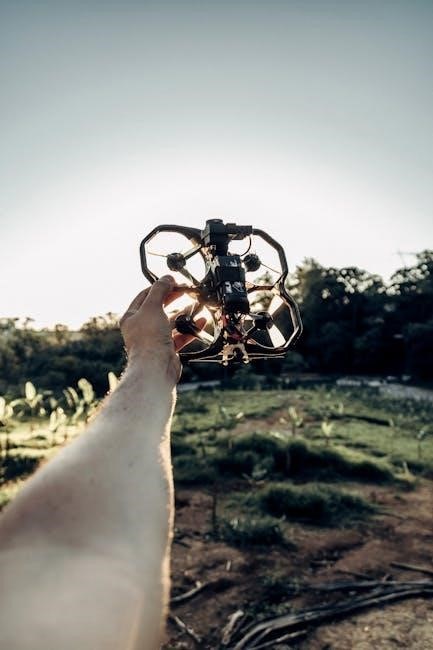
Why Manual Transmissions Typically Don’t Have Remote Start
Manual transmissions often don’t have remote start because of mechanical differences and safety risks. Starting the car remotely requires ensuring it’s in neutral, which is complex and poses risks if not handled properly, leading manufacturers to avoid offering this feature.
2.1 Mechanical Differences Between Manual and Automatic Transmissions
Manual and automatic transmissions differ significantly in operation. Manuals require driver input to shift gears using a clutch and gearshift, while automatics shift gears automatically without driver intervention. In remote start systems, automatics can easily default to “park” or “neutral,” ensuring safe starting. Manuals, however, rely on the driver to engage neutral, making remote start complex without additional safety mechanisms. This fundamental difference poses challenges for remote start integration in manual vehicles, as the system must ensure the car is in neutral to prevent unintended movement or damage.
2.2 Safety Concerns with Remote Starting a Manual Transmission
Remote starting a manual transmission poses significant safety risks if not properly addressed. Unlike automatics, manuals require manual shifting, and if the vehicle isn’t in neutral, it could move unexpectedly, causing accidents or injuries. Drivers might forget to engage neutral, leading to dangerous situations. Additionally, the lack of standardized safety protocols for manual transmissions increases liability concerns. Manufacturers and installers avoid remote starts for manuals due to these risks, emphasizing the need for specialized solutions to ensure safety and prevent potential harm or damage.

Technical Challenges of Implementing Remote Start on Manual Transmissions
Technical challenges include gear position sensing, neutral detection, and preventing accidental starts while in gear. These issues require specialized solutions to ensure safe remote start functionality.
3.1 Gear Position Sensing and Neutral Detection
Gear position sensing is critical for remote start in manual transmissions, as the system must confirm the vehicle is in neutral to prevent accidental movement. Detecting neutral requires specialized sensors or software to monitor the gear selector’s position accurately. This challenge arises because manual transmissions lack the built-in sensors found in automatics. neutral detection ensures safety by preventing the engine from starting while in gear. Aftermarket solutions often involve installing additional sensors or modifying the transmission to enable reliable gear position monitoring, ensuring the remote start system operates safely and effectively.
3.2 Preventing Accidental Starts While in Gear
Preventing accidental starts while in gear is a critical challenge for manual transmission remote start systems. To address this, modern solutions employ reservation mode, which delays engine start until the vehicle confirms it is in neutral. This mode acts like a turbo timer, ensuring the car does not start until safety conditions are met. Additionally, neutral safety switches can be installed to disable the starter circuit unless the transmission is in neutral. These technologies work together to eliminate the risk of unintended starts, providing peace of mind for drivers and enhancing the overall safety of remote start systems in manual vehicles.

Solutions for Remote Starting a Manual Transmission Vehicle
Solutions include reservation mode, neutral safety switches, and DIY methods to enable remote start safely. These address mechanical and safety challenges effectively for manual vehicles.
4.1 Reservation Mode for Manual Transmissions
Reservation mode is a specialized feature designed for manual transmissions, allowing remote start functionality while ensuring safety. It operates similarly to a turbo timer, enabling the engine to start only when the vehicle is in neutral. This mode prevents accidental starts while in gear, addressing a key safety concern. Systems like the Fortin EVO use this technology to adapt remote start capabilities for manual vehicles. Reservation mode requires proper installation and setup to function correctly, ensuring the vehicle remains in neutral during remote start. This solution is gaining popularity as a reliable workaround for manual transmission remote start challenges.
4.2 Neutral Safety Switch Installation
Installing a neutral safety switch is a common solution for enabling remote start in manual transmission vehicles. This switch ensures the engine only starts when the vehicle is in neutral, preventing accidental starts in gear. It is typically installed on the transmission or gearshift assembly, detecting the neutral position. Proper installation requires mechanical expertise to ensure reliability. The switch integrates with the remote start system, enhancing safety and functionality. This setup is particularly popular among DIY enthusiasts and aftermarket installers, offering a secure and effective way to adapt remote start technology for manual transmissions.
4.3 DIY Methods for Enabling Remote Start
DIY enthusiasts can enable remote start on manual transmissions using creative solutions. One popular method involves installing a Raspberry Pi-based system to control the starter motor, requiring custom coding and wiring. Another approach is modifying the vehicle’s existing wiring harness to integrate a remote start module, ensuring compatibility with manual transmissions. Some DIYers use aftermarket kits like the Fortin EVO system, which includes reservation mode for manual vehicles. These methods often require additional components, such as a neutral safety switch, to ensure safe operation. While cost-effective, DIY setups demand technical expertise and careful planning to avoid mechanical or electrical issues.

Step-by-Step Installation Guide for Manual Transmission Remote Start
Begin with pre-installation checks, ensuring the vehicle is in neutral. Connect the remote start module to the ignition and starter wires. Install gear position sensors and program the system to recognize neutral gear. Finally, test the remote start function to ensure proper operation.
5.1 Pre-Installation Checks and Requirements
Before installing a remote start system on a manual transmission vehicle, ensure the car is in neutral gear and the parking brake is engaged. Verify the vehicle’s electrical system compatibility with the remote start module. Check for any existing immobilizers or alarm systems that may interfere. Ensure the installer has access to wiring diagrams specific to your vehicle’s make and model. Additionally, confirm that the remote start system includes features like gear position sensing and reservation mode to prevent accidental starts while in gear. Proper preparation ensures a safe and successful installation.
5.2 Wiring and Sensor Setup
Proper wiring and sensor installation are critical for a manual transmission remote start system. Begin by connecting the remote start module to the vehicle’s electrical system, ensuring all wires are securely attached to the correct terminals. Install a gear position sensor to monitor the transmission’s status, ensuring the system only activates when the vehicle is in neutral. Additionally, integrate a neutral safety switch to prevent accidental starts while in gear. Connect the reservation mode circuitry to allow the system to wait for the vehicle to be in neutral before starting. Finally, test all connections to ensure proper communication between components, verifying that the system operates safely and efficiently.
5.3 Programming the Remote Start System
Programming the remote start system for a manual transmission involves configuring settings to ensure safe and proper operation. Begin by enabling reservation mode, which allows the system to wait for the vehicle to be in neutral before starting. Synchronize the remote control with the system by following the manufacturer’s instructions, typically involving a series of button presses. Set up safety protocols, such as requiring the parking brake to be engaged or ensuring the vehicle is in neutral. Some systems, like the Fortin EVO, offer ready mode to prevent starting while in gear. Adjust timers or remote start durations as needed. Finally, test the system to ensure all features function correctly, providing a secure and convenient remote start experience for your manual transmission vehicle.
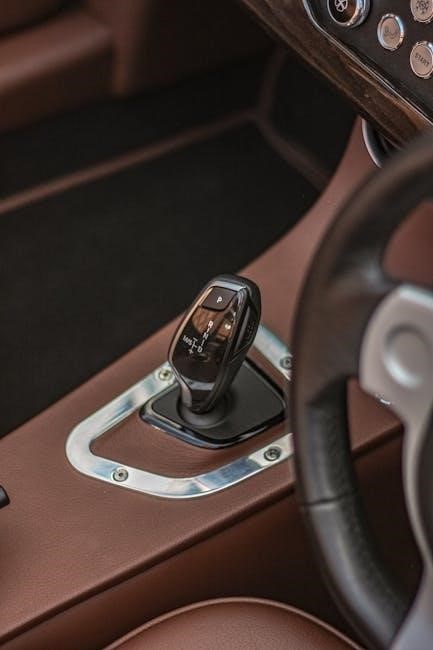
Popular Remote Start Systems Compatible with Manual Transmissions
Fortin EVO, Viper, and other aftermarket systems are widely used for manual transmissions, offering features like reservation mode and neutral detection for safe, efficient remote starting.
6.1 Fortin EVO Remote Start System
The Fortin EVO is a popular choice for manual transmissions, offering advanced features like reservation mode and plug-and-play compatibility. It ensures the vehicle starts only when in neutral, enhancing safety and ease of use. Users praise its reliability and seamless integration, making it a top aftermarket solution for remote starting manual vehicles. The Fortin EVO is widely recommended for its effectiveness and user-friendly design.
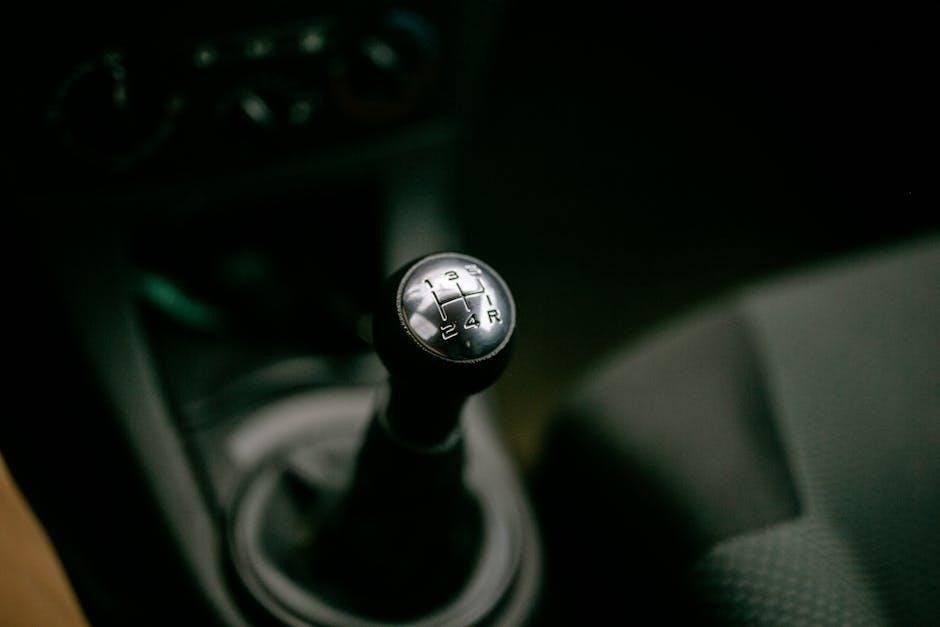
6.2 Viper Remote Start System
The Viper Remote Start System is a highly regarded solution for manual transmission vehicles, offering robust features and reliability. It utilizes advanced sensors to ensure the vehicle is in neutral before starting, addressing safety concerns. Viper’s reservation mode allows for seamless integration with manual transmissions, preventing accidental starts. Many enthusiasts and installers prefer Viper for its ease of use and compatibility with a wide range of vehicles. Its reputation as a top-tier aftermarket system makes it a popular choice for those seeking a reliable remote start solution for their manual transmission cars.
6.3 Other Aftermarket Solutions
Beyond Fortin and Viper, other aftermarket systems offer innovative solutions for manual transmission remote starts. Brands like Avital and iDatalink provide advanced modules designed to work with manual transmissions, ensuring safe and reliable operation. These systems often include features like gear position detection and reservation modes, similar to Viper, but with unique interfaces and compatibility options. They cater to enthusiasts seeking customizable solutions and are widely supported by installers. These aftermarket options expand the choices for manual transmission owners, offering flexibility and peace of mind while addressing the specific challenges of remote starting a manual vehicle.

Safety and Security Features of Manual Transmission Remote Start
Manual transmission remote start systems include anti-theft protections, emergency shutdown options, and neutral gear verification to prevent unauthorized starts and ensure driver safety.
7.1 Anti-Theft Protections
Manual transmission remote start systems incorporate advanced anti-theft protections to prevent unauthorized vehicle operation. These include encrypted communication between the remote and vehicle, ensuring signals cannot be intercepted. Additionally, most systems require the vehicle to be in neutral gear before starting, preventing potential theft. Some systems also feature a “starter kill” function, which disables the ignition unless the proper sequence is followed. These safeguards ensure that even if a thief gains access to the vehicle, they cannot start or move it without the remote control. This enhances security and peace of mind for vehicle owners.
7.2 Emergency Shutdown Options
Modern remote start systems for manual transmissions often include emergency shutdown features to ensure safety. Users can activate an immediate shutdown by pressing and holding specific buttons on the remote control. Additionally, some systems allow for panic button activation to stop the engine quickly. These features prevent unauthorized movement and provide peace of mind. In case of an emergency, rapid deactivation ensures the vehicle cannot be operated improperly. These options are crucial for maintaining control and safety, especially in unforeseen situations. They complement anti-theft measures by offering an additional layer of security and instantaneous response capabilities.

Legal and Insurance Considerations
Installing a remote start on a manual transmission may raise liability concerns and insurance implications. Ensure compliance with local laws and verify coverage with your provider.
8.1 Liability Concerns with Remote Start Systems
Installing a remote start on a manual transmission vehicle can pose unique liability risks. Since most manufacturers and installers avoid manual transmissions, improper installation or misuse may lead to accidents or damages. If the vehicle starts in gear, it could move unexpectedly, causing injuries or property damage. Courts may hold the installer or vehicle owner responsible, emphasizing the need for professional installation and adherence to safety protocols. Additionally, modifying a vehicle’s system may void warranties, further complicating legal and financial accountability.
8.2 Insurance Implications
Insurance implications for manual transmission remote start systems can be complex. Many insurance companies may not cover damages or incidents related to aftermarket remote start installations, especially on manual vehicles, due to increased risk. Improper installation or misuse could lead to accidents, potentially voiding your policy. Additionally, some insurers may view manual transmission remote starts as high-risk modifications, increasing premiums or requiring special coverage. It’s crucial to consult your insurance provider before installing such a system to ensure compliance and avoid policy violations or claim denials. Custom installations may also require additional documentation or certifications.
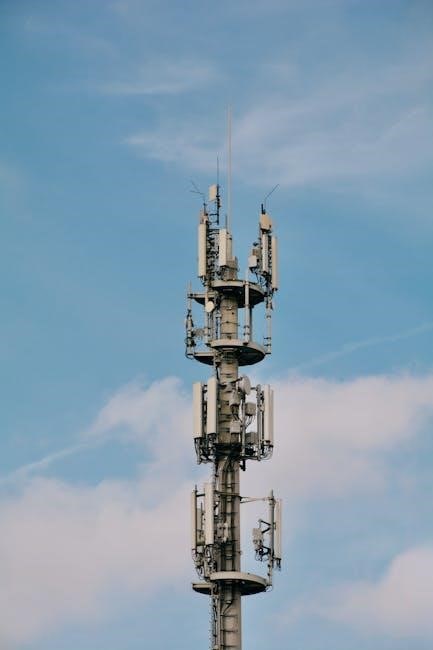
Common Issues and Troubleshooting
Common issues with manual transmission remote start systems include gear position sensing malfunctions and accidental starts while in gear. Troubleshooting often involves checking sensors and wiring connections.
9.1 Issues with Gear Position Sensing
Gear position sensing is critical for remote starting manual transmissions. Issues often arise from faulty sensors or improper calibration, preventing the system from detecting neutral accurately. This can lead to failed starts or safety risks. Installing high-quality sensors and ensuring proper alignment during setup are essential. Users may need to consult their vehicle’s wiring diagram to identify the correct gear position signal. Regular maintenance and testing of sensors can help mitigate these problems and ensure reliable remote start functionality. Addressing these issues promptly is vital for safety and system efficiency.
9.2 System Malfunctions and Fixes
System malfunctions in manual transmission remote starts often stem from wiring issues, sensor failures, or software glitches. Faulty connections or corroded wires can disrupt signal transmission, preventing proper function. Additionally, improper installation of sensors or misconfigured settings may cause the system to malfunction. To resolve these issues, users should check all wiring connections, ensure sensors are calibrated correctly, and update the system’s software if necessary. Consulting the user manual or contacting a professional installer can help diagnose and fix complex problems effectively. Regular maintenance and inspections can prevent future malfunctions and ensure smooth operation.
10.1 Final Thoughts on Manual Transmission Remote Start
Remote start systems for manual transmissions have evolved significantly, offering a blend of convenience and safety. While traditional challenges persist, advancements in technology, such as reservation mode and neutral safety switches, provide reliable solutions. These systems ensure vehicles start safely, even in manual gear, by preventing accidental starts while in gear. Users must weigh the benefits against potential complexities and ensure proper installation. As the technology continues to improve, manual transmission remote starts are becoming more accessible and user-friendly, catering to enthusiasts who value both control and modern convenience.
10.2 Future Developments in Remote Start Technology
Future advancements in remote start technology for manual transmissions may focus on enhanced smartphone integration, AI-driven systems, and improved safety protocols. Smartphones could serve as primary remote controls, offering real-time vehicle monitoring. AI might predict driver behavior, optimizing start sequences and reducing wear on components. Security features could be bolstered with biometric authentication, ensuring only authorized users can activate the system. Additionally, developments in environmental sensing could allow the system to automatically adjust based on weather or noise restrictions. These innovations aim to make remote starting more seamless, secure, and efficient for manual transmission vehicles, addressing historical limitations while embracing modern connectivity.
